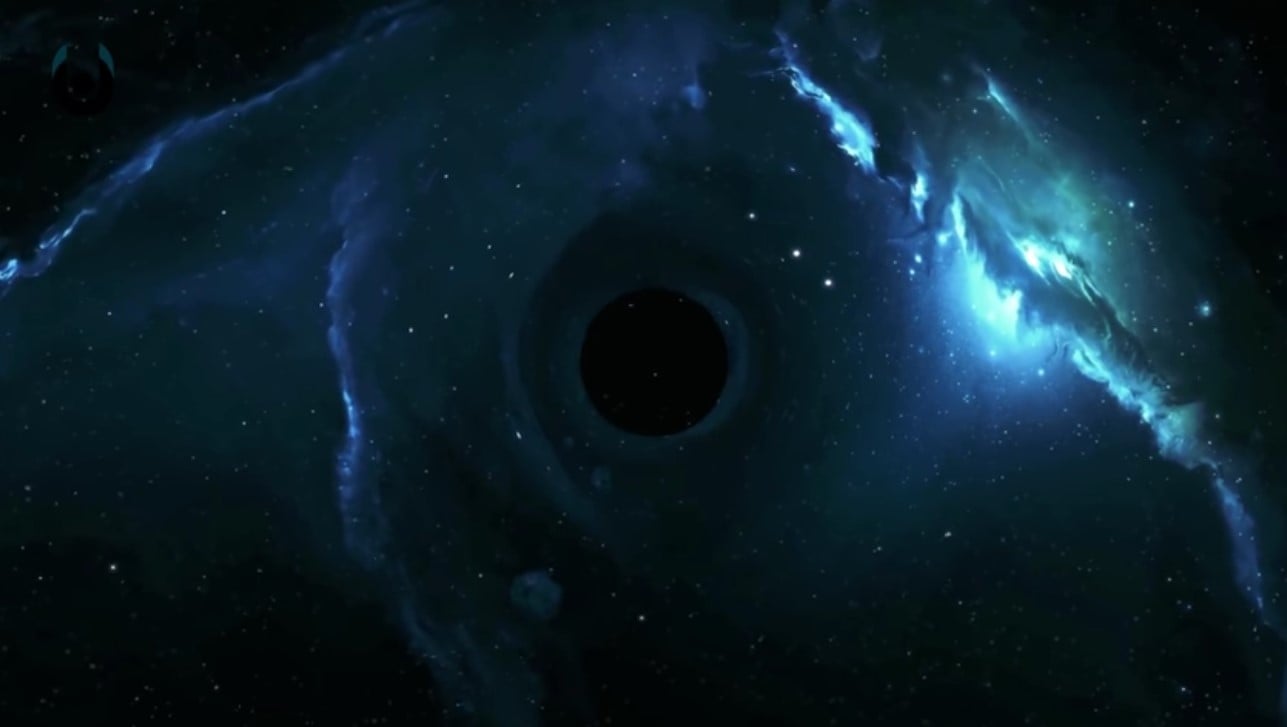

The researchers found that inside the Bondi radius, the density profile follows a power law flatter than expected for classical Bondi accretion. The mass accretion rate at the Bondi radius was calculated to be at a level of about 0.1-0.2 solar masses per year. However, the astronomers noted that there is a possibility that the temperature increases on scales smaller than those that can be investigated. The findings are surprising, as they are in contrast with the expected increase in temperature towards the center one would expect from classical Bondi accretion, which suggests that the dynamics of the gas are not being determined by the black hole. The researchers detected two statistically significant temperature components within 9,780 light years and found that the temperature profile increases very mildly within the Bondi radius. The study analyzed the hot gas properties within the Bondi accretion radius (estimated to be between 1,240 and 1,760 light years. "Using new deep Chandra observations in conjunction with archival Chandra data of NGC 1600, we have determined the temperature and density profiles within the Bondi accretion radius, down to a radius of ∼0.16 kpc from the central ultramassive black hole," the researchers wrote in the paper. Walker decided to employ Chandra in order to conduct such study. Hence, University of Alabama's James Runge and Stephen A. The properties of the UMBH in NGC 1600, especially its huge mass and relatively close proximity, make it an excellent target for which spatially resolved temperature and density profiles can be obtained within the Bondi radius-a calculated radius of the region around the galaxy from which surrounding medium is likely to be drawn in and accreted. It has a mass of around 1 trillion solar masses, and despite the fact that it belongs to a relatively small group of only a few galaxies, NGC 1600 hosts an extremely massive black hole-with mass estimated to reach 17 billion solar masses. Galaxy centers are residing places for supermassive black holes (SMBHs).At a distance of about 150,000,000 light years away from the Earth, NGC 1600 is an elliptical galaxy in the constellation Eridanus. Our results could provide an explanation for a number of observations, which include multiple nuclei in core ellipticals, off-center AGNs, and eccentric nuclear disks. We calculate the expected number of stalled satellites as a function of the host galaxy mass and show that the brightest cluster galaxies should have ≳1 of such satellites orbiting within their cores.
#Ultramassive black hole Pc
During such minor mergers, the secondary hole stalls on an eccentric orbit at a distance of order one-tenth the influence radius of the primary hole (i.e., ≈10-100 pc for massive ellipticals). = ) in sufficiently massive galaxies have decay timescales longer than one Hubble time. We discuss the implications for gravitational wave event rates and hypervelocity star production. Our study suggests more » that in this extreme case, SMBH coalescence is governed by dynamical friction followed nearly directly by gravitational wave emission, resulting in a rapid and efficient SMBH coalescence timescale. Curiously, these extremely massive binaries appear to nearly bypass the three-body scattering evolutionary phase.

By the time the SMBHs form a hard binary, gravitational wave emission dominates, and the black holes coalesce in a mere few Myr. The SMBH separation shrinks rapidly due to dynamical friction, and quickly forms a binary black hole if we scale our model to the most massive estimate for the NGC 1277 black hole, for example, the timescale for the SMBH separation to shrink from nearly a kiloparsec to less than a parsec is roughly 10 Myr. We find that the merger remnant is axisymmetric near the center, while near the large SMBH influence radius, the galaxy is triaxial. Here, we perform direct N-body simulations of mergers of galactic nuclei where one black hole is ultramassive to study the evolution of the remnant and the black hole dynamics in this extreme regime. The dynamical effects of such ultramassive central black holes is unclear. Henize 2-10, NGC 4889, and NGC 1277 are examples of SMBHs at least an order of magnitude more massive than their host galaxy suggests. Although supermassive black holes (SMBHs) correlate well with their host galaxies, there is an emerging view that outliers exist.


 0 kommentar(er)
0 kommentar(er)
